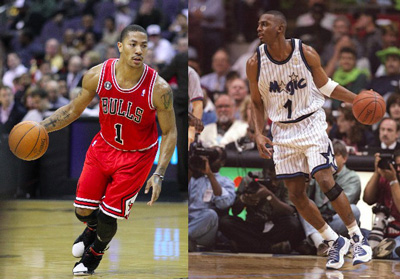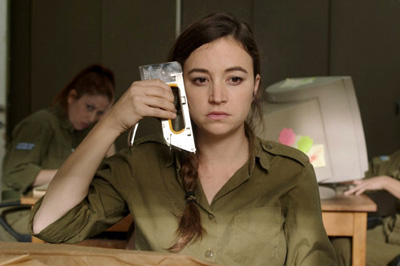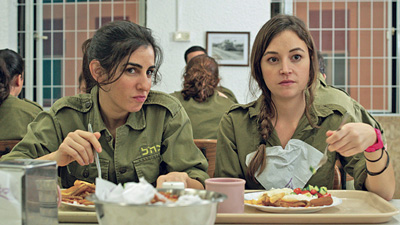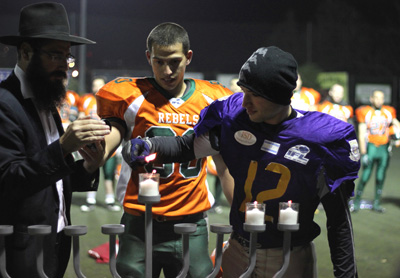Golden Potatoes with Garlic Chive Butter
Permanent link
You know how sometimes there are dishes that conjure up memories buried somewhere deep inside you? These potatoes do that for me.
These little perfect golden beauties are not new to my blog. They have been posted on my blog since I started blogging oh so very long ago…when my blog was here, complete with horrible pictures and all. I have come a long way since 2008.
That was also my very first year living in the house with the hubs. And that was the year I decided to undertake Thanksgiving for 20 people at our brand new house …
I started planning my menu a month in advance. Trying to figure out the best turkey (mine is still the best, by the way), the ultimate sides and the most unique potatoes. Hubs thought that no table is complete without a potato dish. How Russian of him.
Truth be told, I had to agree. But it could not just be any potato, it had to be gloriously delicious and unique, and these were most definitely them …
It was my mother-in-law that introduced me to these golden beauties. We happened to be at her house for one of the High Holidays when I noticed her removing the most gorgeous golden puffs out of the oven. They were resting right on the racks. “Strange,” I thought, and made a mental note to buy the woman some baking sheets, poor thing.
And then she brought over little ramekins of fragrant and warm garlic butter. My brother-in-law immediately grabbed two of them for himself and started dipping his bread into it, chomping down loudly and smacking his lips out of pure enjoyment after each bite. No he is not a toddler, he’s in his 30s.
His mom came by toting a platter of those beautiful little puffs and smacked my brother-in-law on the back of his head. “That’s not what the butter is for!” And she immediately placed three of these golden puffs on his plate. “Here, dip these into the butter.”
To say that he was happy was an understatement. He continued chomping away on the golden puffs and raised a few toasts to his mom’s golden hands, exclaiming that this is the only thing he needs to eat that night. I begged to differ. And we began one of our many arguments of the night. We both loved to argue …sometimes over food, sometimes over movies, always ending in a good laugh or me smacking him upside the head.
As we argued I proceeded to take one of these puffs and dipped them into the warm garlic butter. And I stopped dead in my tracks.
These weren’t puffs! They were potatoes! OMG … these round little golden nuggets were potatoes! And combined with that garlic butter … they were magic.

“Ella, there are potatoes?” I asked my mother-in-law.
“Da,” she said simply, with a proud smile on her face. “Amazing aren’t they?”
I am rarely speechless, but I was. How does this happen without deep frying them? What could possibly happen to make these tiny balls of tater sunshine? I stared at it in my head, rotating it around to inspect for any secrets. And as if reading my mind, my mother in law goes, “Salt, the secret is salt.”
Funny, I didn’t see any salt on them … well, with the exception of the salt that I had just doused them in.
She then explained that you simply parboil the potatoes in very salted water. Once they are fork tender, you pour them right over your baking rack from the oven and stick them into the oven until they are golden and deliciously crispy, about 20 minutes.
Naturally, I went and created these for Thanksgiving and they were so perfect, so elegant, so gone. Seriously, I think I made at least 40 for 20 people and there was not 1 left. Not one. I served them as an app and my family just devoured them, dipping them into my glorious chive and garlic butter, begging for more.
The coolest thing about this recipe is that you can make it ahead of time. I boiled these babies up a few hours before service, drained them, and left them in a pot covered with a towel so they stayed warm and moist. Then, once I was almost ready for the course, I placed them onto the oven rack and baked them off at 450 degrees.
They really were perfection, and no one you serve will know how very easy they are.

Golden
Potatoes with Garlic Chive Butter
From
Girl and the Kitchen
For the Potatoes
1.5 pounds small-medium white
potatoes or Yukon Golds, NOT red potatoes (just make sure that they do not fall
through your racks)
1 tbsp kosher salt
1 gallon of water
For the Garlic and Chive Butter Dip
1 stick of butter
4 cloves of garlic, minced
3 chives, finely sliced
1 pinch of red pepper flakes
Salt and pepper
Instructions
1. Take out two of your racks from the oven and THEN preheat it to 450 degrees.
2. Peel the potatoes and make sure they are no smaller than a golf ball and no bigger than a small tennis ball.
3. Place the potatoes in a pot full of water and for every gallon of water use 1 tablespoon of Kosher Salt. The salt is why the potatoes brown so beautifully in the oven , so make sure you put it in
4. As soon as the potatoes reach a boil, dump them into a colander and then line them up on the racks. (This was the reason not to peel them too small, we don’t want them falling through the racks.)
5. Place racks CAREFULLY back into the oven into the oven for about 15-20 minutes.
6. While the potatoes are roasting, place butter, garlic, chives and seasonings into a small pot.
7. Over low heat, allow the butter to melt slowly and let all the flavors infuse into the butter. This should take about 5 minutes.
8. Once the potatoes are golden brown, remove and serve immediately with the garlic butter dip.
9. Please note, if you are making these ahead of time, just take them out of the oven once they are ready and let them stay on the racks. Right before service, stick them back in the oven and allow them to crisp up again and they will be ready for you!




.jpg)
.jpg)
.jpg)







.jpg)
.jpg)
.jpg)
.jpg)
.jpg)
.jpg)




.jpg)



